Related Research Articles

Mehmed III was the sultan of the Ottoman Empire from 1595 until his death in 1603. Mehmed was known for ordering the execution of his brothers and leading the army in the Long Turkish War, during which the Ottoman army was victorious at the decisive Battle of Keresztes. This victory was however undermined by some military losses such as in Győr and Nikopol. He also ordered the successful quelling of the Jelali rebellions. The sultan also communicated with the court of Elizabeth I on the grounds of stronger commercial relations and in the hopes of England to ally with the Ottomans against the Spanish.
Mehmet Ali, Memet Ali or Mehmed Ali is a Turkish given name for males. People with the name include:
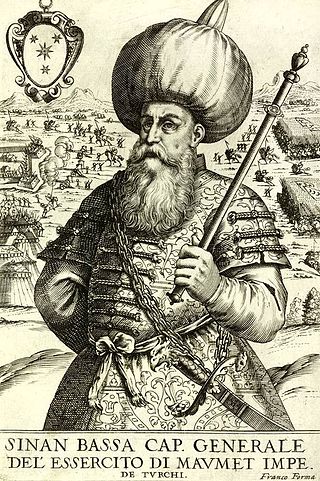
Koca Sinan Pasha was an Albanian-born Ottoman Grand Vizier, military figure, and statesman. From 1580 until his death he served five times as Grand Vizier.
Damat Ibrahim Pasha was an Ottoman military commander and statesman who held the office of grand vizier three times (the first time from 4 April to 27 October 1596; the second time from 5 December 1596 to 3 November 1597; and for the third and last time, from 6 January 1599 to 10 July 1601. He is known as the conqueror of Kanije.
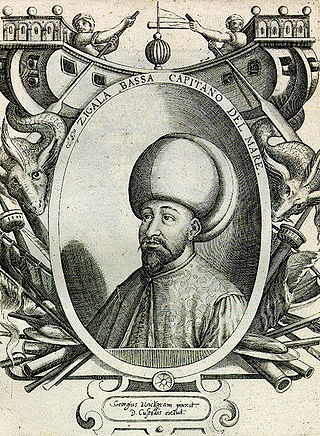
Cığalazade Yusuf Sinan Pasha, his epithet meaning "son of Cicala", was an Ottoman Italian statesman who held the office of Grand Vizier for forty days between 27 October to 5 December 1596, during the reign of Mehmed III. He was also a Kapudan Pasha as well as a military general. He was one of the most capable statesmen of the Ottoman Classical Age, having contributed to the eastwards expansion of the empire at the expense of Persia and successfully defended Ottoman Hungary from Habsburg invasion. However, because of court intricacies, he resigned from the Vizierate after just over a month in office.
Mehmed Pasha or Mehmet Pasha may refer to:
Derviş Mehmed Pasha, an Ottoman Bosnian statesman, served briefly as the Grand Vizier of the Ottoman Empire between 21 June 1606 and 9 December 1606.
Yavuz Ali Pasha or Malkoç Ali Pasha was an Ottoman statesman. He belonged to the Malkoçoğlu family and served as the Grand Vizier of the Ottoman Empire from 16 October 1603 to 26 July 1604 replacing Yemişçi Hasan Pasha. He had previously served as the Ottoman governor of Egypt from 1601 to 1603. His installation as Grand Vizier took place on 29 December 1603, over two months after his appointment and a week after the accession of Ahmed I, due to the time it took him to settle affairs in Egypt and travel to Constantinople. He brought with him two years' worth of the province's back taxes.
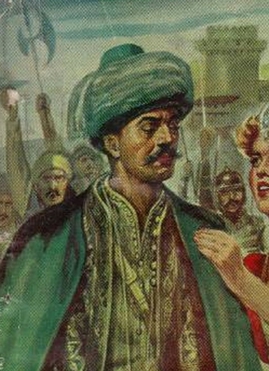
Gazi Hüseyin Pasha, also known as Deli Hüseyin Pasha or Sarı Hüseyin Pasha or Baltaoğlu Hüseyin Pasha, was an Ottoman military officer and statesman. He was governor of Egypt (1635–1637), Kapudan Pasha in the 1630s, and briefly Grand Vizier in 1656.
Hadım Mehmed Pasha was a Georgian Ottoman statesman. He was Grand Vizier of the Ottoman Empire between 21 September 1622 and 5 February 1623. He also served as the Ottoman governor of Egypt from 1604 to 1605.
Tayyar Mehmed Pasha was an Albanian Ottoman grand vizier. His epithet Tayyar means "flying", referring to his speed in military operations.
Semiz Mehmed Pasha was an Ottoman grand vizier and a descendant of Suleiman the Magnificent.
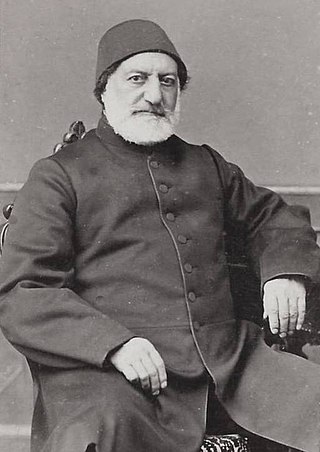
Yusuf Kamil Pasha was an Ottoman statesman and Grand Vizier of the Ottoman Empire during the reign of Sultan Abdülaziz.

Safranbolulu Izzet Mehmet Pasha was a grand vizier of the Ottoman Empire and served from 1794 to 1798.
Hadım Hafız Ahmed Pasha was an Ottoman statesman who served as the governor of Egypt from 1590 or 1591 to 1594. Previously, he had served as governor (beylerbey) of Cyprus, and he became a vizier along with his appointment to Egypt. After Egypt, he became the governor of Bursa from 1594 to 1595. His epithet Hadım means "eunuch" in Turkish.

Seyyid Emir Mehmed Pasha, known by the epithet "al-Sharif" among his Arab subjects, was an Ottoman statesman who served as defterdar, Ottoman governor of Egypt (1596–1598), and Ottoman governor of Damascus (1599–1600).
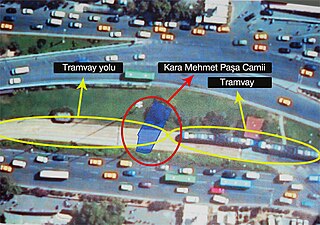
Kara Mehmed Pasha was an Ottoman statesman who served as the Ottoman governor of various provinces (eyalets) and sub-provinces (sanjaks). He was also a vizier.
Divitdar Mehmed Emin Pasha was an Ottoman statesman who served as grand vizier of the Ottoman Empire from 1750 to 1752. After this, he was exiled to Rethymno on Crete for three years.

Izzet Mehmed Pasha was an Ottoman statesman who served as the Grand Vizier of the Ottoman Empire twice, first from 1774 to 1775, and second from 1781 to 1782.